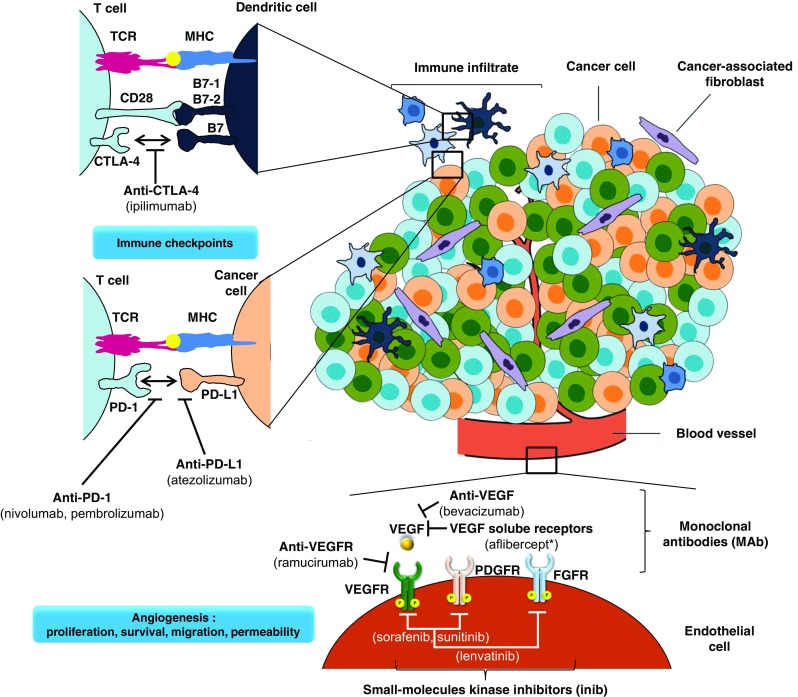Fig. 2.

Targeting the tumor microenvironment for cancer therapy. Multiple strategies to target the tumor microenvironment are currently in clinical use as indicated here and referenced throughout the review. The tumor vasculature can be targeted with multiple drugs, such as bevacizumab (targets VEGF), aflibercept* (a soluble decoy receptor for VEGF) and sunitinib, sorafenib and lenvatinib (multi-target receptor tyrosine kinase inhibitors). Immune activation is also a promising way of therapeutic intervention which can be achieved through blockade of CTLA-4 (ipilimumab), PD1 receptor (nivolumab and pambrolizumab) or PD-L1 (atezolizumab). (*aflibercept, instead of being a monoclonal antibody, this is a synthetic fusion protein). Abbreviations: CTLA-4 (or CD152), cytotoxic T lymphocyte antigen 4; FGFR, fibroblast growth factor receptor; MHC, major histocompatibility complex; PD-1, programmed cell death 1, PD-L1, programmed cell death ligand 1; PDGFR, platelet-derived growth factor receptor; TCR, T-cell receptor; VEGF, vascular endothelial growth factor receptor; VEGFR, vascular endothelial growth factor receptor
